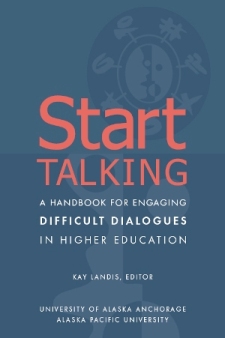While preparing Community in the Classroom this past week, Andrew Porter and I discussed the question:
How do we keep our students from feeling isolated in class?
Our first answer, in simple terms, was: Get-To-Know-Each-Other.
A classroom where students feel like they are known enables them to feel like they belong. Belonging breeds motivation, risk-taking. Motivation and risk-taking generate learning, and learning is our goal. But…
….getting to know each other involves getting closer to personal than can feel comfortable.
In order to help our students down this road, answering low-risk and entertaining questions at some point during class can help to break the proverbial ice over the semester. No matter the size of your class, these questions can get conversation going between pairs, rows, sections, everybody. 10 minutes of getting to know each other may seem like a lot, but can lead to much richer learning over the long-term.
Below I’ve included 35 get-to-know-you-with-minimal-risk questions compiled and contributed to us by Heather Holleman, lecturer in English. Enjoy!
1. What is the most interesting course you have ever taken in school?
2. What is your favorite quotation?
3. What is one item you might keep forever?
4. What were you known for in high school? Did you have any nicknames?
5. If you could have witnessed any event in sports history, what would it be?
6. What is something you consider beautiful?
7. What was your first CD or song you played over and over again?
8. What accomplishment are you most proud of?
9. If you could be an apprentice to any person, living or deceased, from whom would you want to learn?
10. What are three things that make you happy?
11. What’s one movie you think everyone should see? What’s a movie you think nobody should see?
12. Who inspires you?
13. What’s one thing you want to do before you die?
14. Get in groups of three people. What’s the most bizarre thing you have in common?
15. Whenever you are having a bad day, what is the best thing you can do to help cheer yourself up?
16. Have you ever experienced something unexplainable or supernatural?
17. What was your best Halloween costume?
18. You can choose the question you want to ask the class.
19. What was the last thing you Googled?
20. What YouTube video do you watch over and over?
21. What’s the kindest act you’ve ever witnessed?
22. Tell us one thing you know you do well (a talent?) and one thing you know you don’t.
23. What is your favorite way to procrastinate?
24. What is your favorite home-cooked meal?
25. What was your favorite childhood toy?
26. What do you do other than study? What clubs are you involved in?
27. What was your first job?
28. Any brushes with fame?
29. What’s the story behind your name?
30. Do you believe in anything that most people might not believe in?
31. I wish everyone would___________________
32. What’s the best sound effect you can make?
33. What’s the funniest thing you did as a kid that people still talk about today?
34. What was the last thing you bought on eBay?
35. Tell us something quirky about you.





